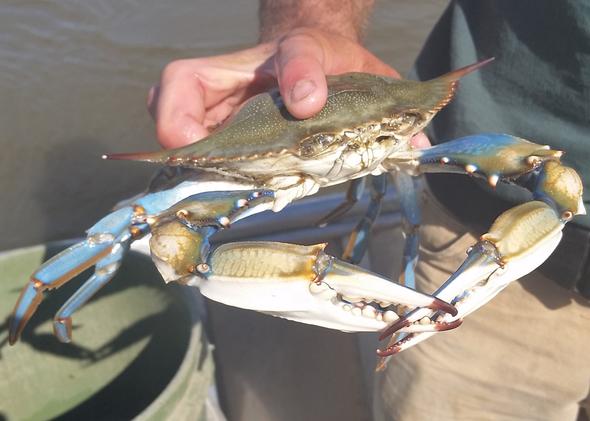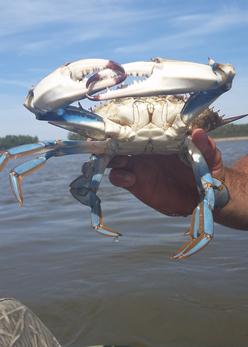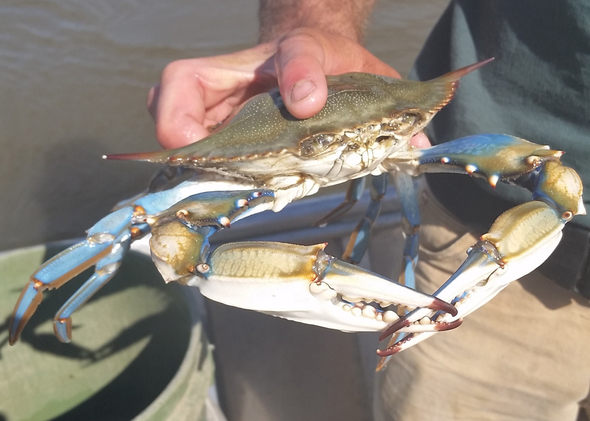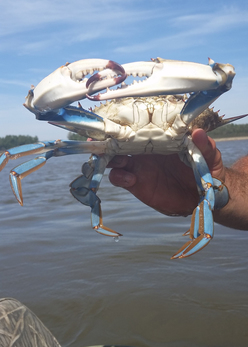
Xplor reconnects kids to nature and helps them find adventure in their own backyard. Free to residents of Missouri.


































Stay in Touch with MDC news, newsletters, events, and manage your subscription

Xplor reconnects kids to nature and helps them find adventure in their own backyard. Free to residents of Missouri.

A monthly publication about conservation in Missouri. Started in 1938, the printed magazine is free to residents of Missouri.




CAPE GIRARDEAU, Mo. – A blue crab recently surprised resource scientists with the Missouri Department of Conservation (MDC) during fish sampling on the Mississippi River. The fish sampling was part of a statewide paddlefish research project which is checking the quality of sport fish in Missouri's large rivers, tributaries and lakes. The researchers are looking for quality, self-sustaining wild populations of paddlefish to ensure harvest opportunities for both sport and commercial fishing.
Nick Kramer, a graduate student at Southeast Missouri State University, was with colleagues Wes Sleeper and Mark Hempel, when he pulled a net for the paddlefish project and came up with the blue crab. The group is working in cooperation with MDC, alongside Frank Nelson, MDC wetlands ecologist.
"Part of the exciting aspect of river research is that when you use a type of gear, you never quite know what you'll get when you pull it back out of the water," Kramer said. "While adult crabs typically prefer salt to brackish water along the coast, they can tolerate and live in fresh water."
Kramer said the crab is identified as a male because of the resemblance of the Washington Monument on its abdomen. Females have the shape of the Capitol Building on their lower abdomens along with seemingly painted red fingertips, he said.
According to Nelson, the only other record of a blue crab this far north along the Mississippi and its tributaries was by the U.S, Fish and Wildlife Service in 2004 when one was taken off a power plant intake screen in the lower Ohio River near Metropolis, Ill.
How the crab ended up in the Mississippi and where it originated is unknown. Nelson said many aquatic species can swim hundreds of miles on their own accord, while others are dispersed by the flow of water. However, it could be that the crab "hitchhiked" on a vessel traveling up the river, or was dumped for an unknown reason.
"Sometimes people inadvertently transport hidden 'hitchhikers' on boats and other vehicles," Nelson said. "Other times people simply dump aquatic species into lakes or rivers out of convenience without realizing the potential implications on the natural community."
Implications to the natural community include promoting species that don't belong. Examples of this are zebra mussels and Asian carp, which have no natural predators in Missouri, compete with native species for food and ultimately cause harm to the waterway and its native species. However, this find of a singular crab in the Mississippi River doesn't mean a wave of a new invasive species or disease outbreak, Nelson said.
"It won't change the findings of the paddlefish study," Nelson said. "It is, at this point, a rather interesting discovery, unexpected for the region, and a reason to stop and think about the best ways to protect our native species."
Nelson added that research and tracking of Missouri's fish and wildlife species is important because they contribute to the local economy and recreational experiences.
"My personal enjoyment as I work for MDC is that you never know what you'll find unless you take a look and see for yourself," Nelson said. "I'm glad Nick's passion and education allowed him to be out on the river last week and pull that net and take a look. I hope he continues to ask questions and look for answers."
More information about fish populations and MDC fish research can be found at mdc.mo.gov.